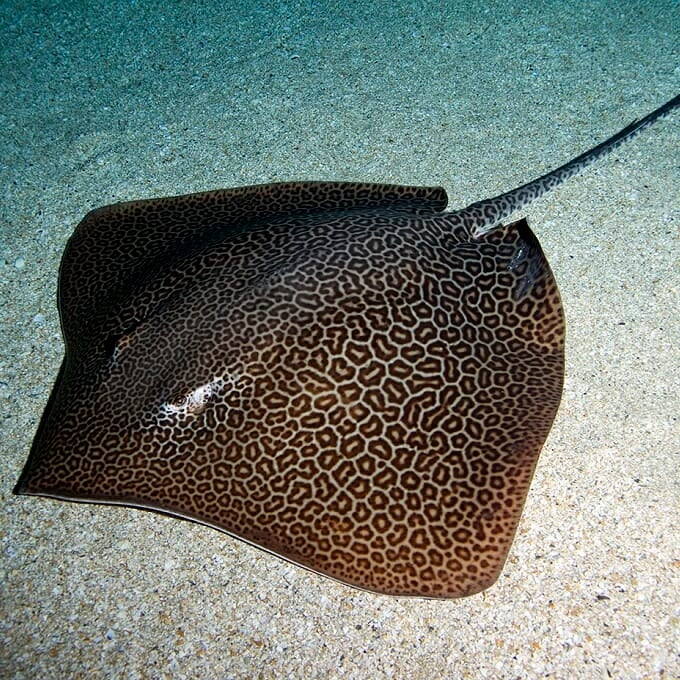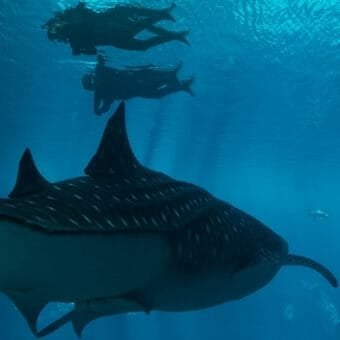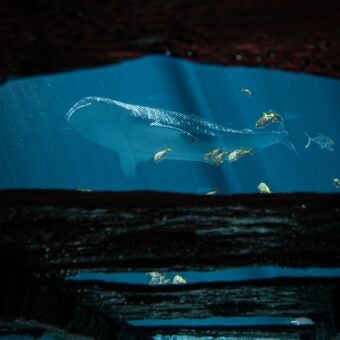-
Size
Up to 13.5 feet (4 m) -
Diet
Crabs, shrimp and shelled invertebrates -
Range
Indo-West Pacific -
Habitat
Inshore over sandy bottoms and near reefs
Physical Characteristics
- This is a large stingray that can reach 13.5 feet (4 m) in length, including its tail, and will grow to about 4.5 feet (1.4 m) in width. The newborn pups, on average, are about 8 inches (20 cm) wide.
- The tail is long and slender (up to three times the body length) and tapers to a fine point with a single spine (or barb).
- The snout is broadly triangular and the disc-shaped body is slightly longer than wide.
- The upper surface of the adult’s body and tail is sandy brown in color and covered in a pattern of closely spaced leopard-like circular black rings.
- Juveniles have gray to brown coloration with larger black spots.
Animal Fact
The leopard whipray’s tail can be up to three times its body length.
Diet / Feeding
- The leopard whipray feeds on crabs, shrimp and shelled invertebrates.
Range / Habitat
- The leopard whipray occurs in the Indo-West Pacific.
- This stingray is found inshore over sandy bottoms and near reefs.
Reproduction & Growth
- This species is ovoviviparous (produces eggs that hatch internally).
Conservation Status
- “Endangered” on the IUCN Red List.
Additional Information
- Sometimes appear as by-catch in trawl nets, deep gill nets and hook-and-line fisheries.
- The leopard whipray is valued for its meat, skin and cartilage in some locations.
- Habitat destruction is also negatively affecting the leopard whipray.
- Also known as Bleeker’s variegated whipray, and often mistaken for other similar species, such as Himantura fava and Himantura uarnak.
Sources
- www.fishbase.org
- www.iucnredlist.org
- Sharks and Rays of Australia, Last, Peter R. and Stevens, John D. Harvard University Press



